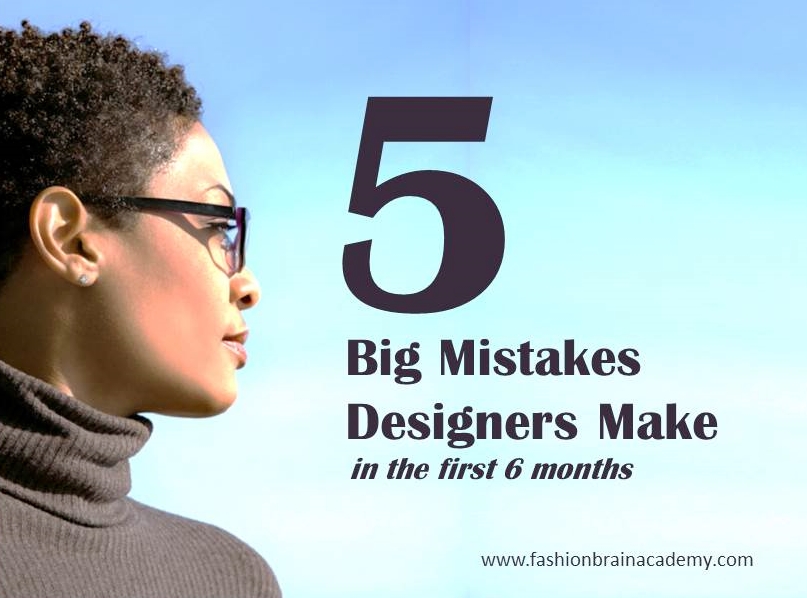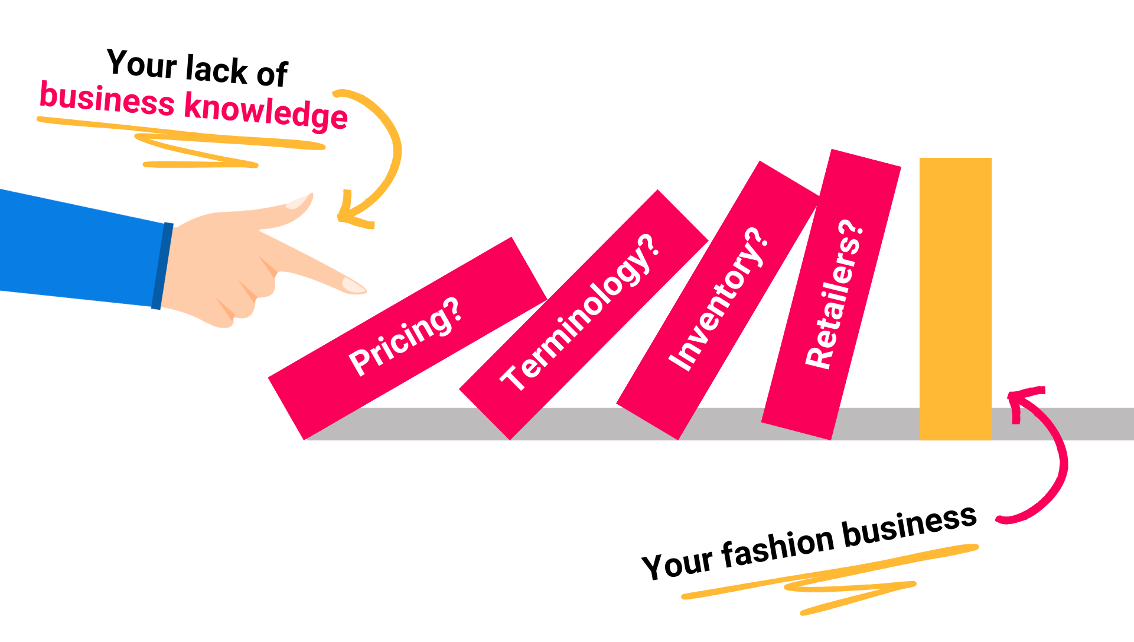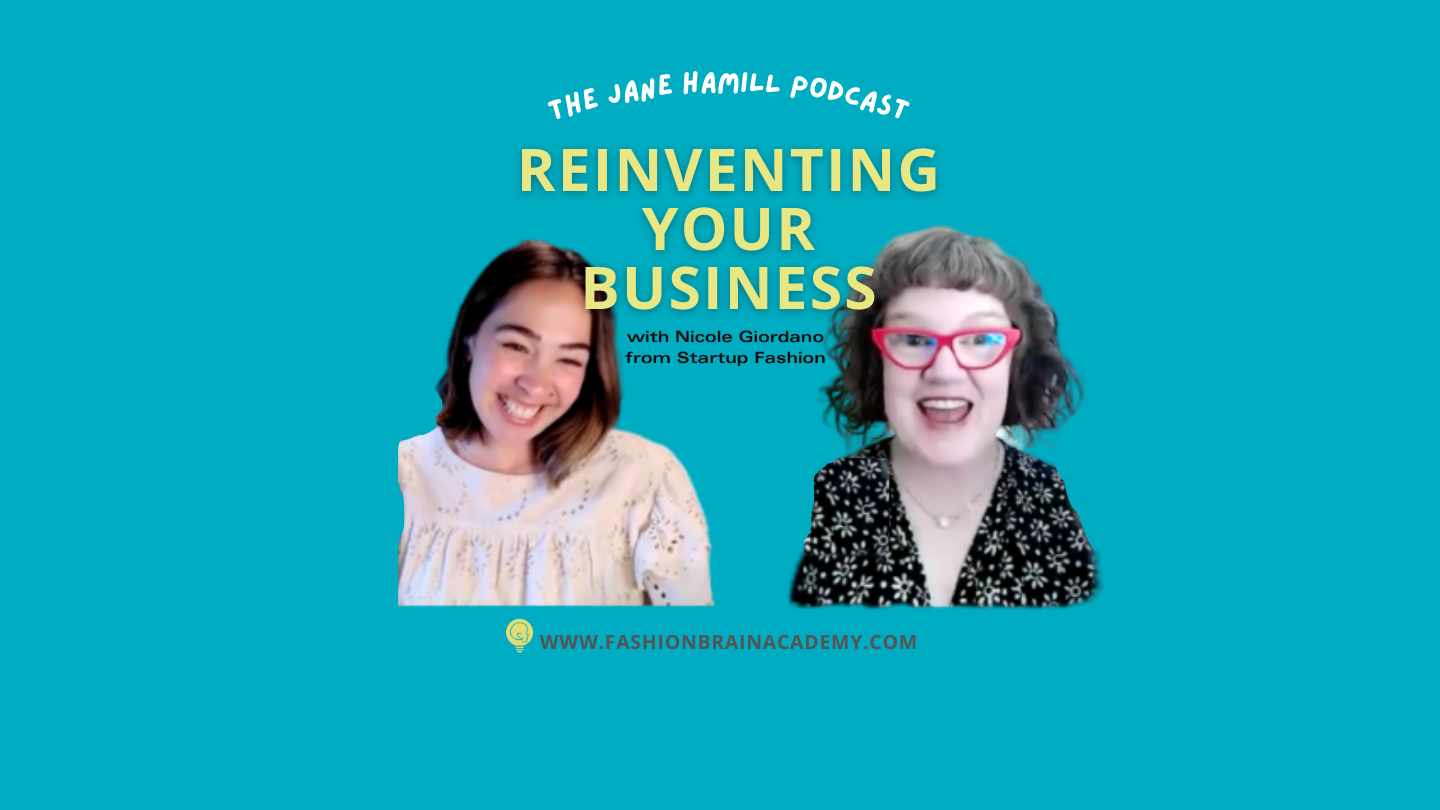 In this episode of the Fashion Brain podcast, I talk about the WRONG way to start a fashion brand. The 5 mistakes I list today are all ones I’ve made myself with my retail store and womenswear line. I really hope today’s podcast saves you some trouble – and money.
In this episode of the Fashion Brain podcast, I talk about the WRONG way to start a fashion brand. The 5 mistakes I list today are all ones I’ve made myself with my retail store and womenswear line. I really hope today’s podcast saves you some trouble – and money.
In this episode, we’ll cover:
- Why it’s OK to design your business exactly how you want
- How most of us focus on being creative first and what we should do instead
- EBM – emotional business management and how to avoid it
- Money, money, money – cash flow, costing, pricing…
- When you should be working and my dumb mistake
- The truth about doing everything yourself in the beginning
- What “great feedback” on your product really means
Today you get a choice to read or listen. Scroll down for the written version of the podcast. Click here to listen:
To download this podcast to your device, just click here and go to the top of the page.
Here are the 5 biggest mistakes I see fashion brands making in the first 6 months of business.
1) Not being clear on the goals for the business so you don’t have a PLAN. Sometimes, designers just get too excited to “get going” on their business and forget to do their homework, including:
- Defining your customer
- Thinking about what you really want out of the business – from all different aspects; financial, lifestyle, work/life balance, if you want to be on the front lines of your line or working behind the scene. For instance, if you are painfully shy, you probably don’t want a home party/trunk show business where you interact with the customer on a regular basis.
- Getting to know the competition
- Making sure you have the right mindset – believing that you can do it. Do you have the support you need? The knowledge? The right mentors? Eliminating the excuses, the fears
- Making sure you are prepared to be a boss: managing people, dealing with business licenses, paying the bills, setting up systems, worrying about cash flow, etc.
2) Forgetting to be a businessperson first and a creative person second
The whole idea of a business is to MAKE MONEY. And yet, over and over again we see designers treating it like a hobby. Hobbies are fun, you don’t have to do things you don’t want to if it’s a hobby, you don’t have to stretch outside your comfort zone, and you don’t have to worry if things don’t sell. Examples of this include:
- Becoming too emotional about your line. If it’s not profitable, dump it from the line. (I know, I know, there are some instances when you want something cool in the line just to have it, regardless of your margin. It’s OK as long as it’s the exception, not the rule.) If you love it that much, just make one for yourself and leave your business out of it.
- Not working regular hours. No, you don’t have to work 9 – 5. But you do have to be consistent and treat it like a job. People you work with should know when you are coming and going and be able to count on you.
- Listening to what people say. “Everybody loves this one” is nice. Did they buy it? What people claim to love and what they spend money on can be 2 different things. Customers show their love for something when they put their money down.
3) Not choosing a true niche or focus
It really comes down to having a clear, compelling, product concept. A manageable way to run a business is to start with a very tight, simple product line. Think hard about your product assortment because you really want to be GREAT at one thing before you add to your line. Get known for something and be an expert at it. If your ultimate goal is to have a whole collection that ships 5 deliveries, great, you can get there eventually. But start with ONE GREAT IDEA and be the go-to line for what you do. Customers understand that simplicity. Amazon sells everything these days, but they became well-known for selling books. They were great at it and then they diversified.
4) Money mistakes When it comes to money, the biggest mistakes include:
- Not starting with enough money and not knowing how much you will need.
- Not understanding how your cash flow will actually flow. If you plan to sell your line wholesale, consider this scenario… In April, you get 18 orders for your Fall line which you plan to ship in August. The average order is $1,500 which is $27,000 in wholesale sales. You need to come up with approximately $13,500 to produce these orders and you need it now so you can order fabrics, get your final patterns made, get them graded, pay your sewing contractors, etc. You’ll pay to produce everything up front and not see a dime returned to you until August. Even if the stores gave you their credit card back in April, you should be aware that some cards may be declined and you could produce an order that you cannot ship. Ouch.
- Not costing and pricing things correctly – including not valuing your time. You must be sure you know exactly what each item in your line costs to produce so you can price things correctly. I know it’s probably not your favorite thing to do, but this is what separates the men from the boys.
5) Trying to do everything at once – and doing it all yourself
I see this one all the time (and I definitely WAS this person) and it ties back into your goals for the business. Based on what you want from (and for) the business, focus on what avenue of sales you want to pursue – focus on one target market – focus on a simple product assortment. You simply cannot do a decent job when you try to do everything at once and you will be frantic, broke, overwhelmed, and miserable. Many designers are not patient enough and tend to get bored with slow growth. It’s better to control your expectations and be realistic about what can effectively be accomplished in the first few years.
Now it’s your turn… Did you like this episode? If you did, click the LIKE button and share it with your friends. And tell me this…
- Which of these mistakes have you made?
- Which of these do you think is the DEADLIEST of them all?
- Do you have a story about making one of these mistakes and how you fixed it?
Your comments and feedback are the REASON I DO THIS so leave a comment below and let’s get this conversation started, OK?
As always, thanks for reading and listening!
Jane






13 Responses
Perfect length (20 min) for a reminder session. All these points are relevant every day. I just need to hear them periodically. Thanks Jane!
Thanks Janette! -Jane
This is exactly what I needed today, particularly #4 – thank you Jane!
Thanks so much.I think the keep it simple and be very good with it in the beginning is the challenge.I need to figure it out what product the people will buy and do it different ways than just adding more and more random products.
Also the knowledge of handling cash flow is challenging and scary when I will be getting bigger orders.
#1 & #5 were personally my downfall , wish I heard this 3 yrs ago before I started. Thankfully I hired Jane a year ago as my business coach and she helped me fix, refocus, grow my list and increase my ROI!
Not having clear goals is the biggest mistake. I used to take forever to make decisions or continually revisit decisions already made and it was compounded because I have multiple skill sets. I found myself doing things because I could not because I should.
For example, it took me 6 months to choose a store platform simply because I got caught up in customizing store fronts during the many trial periods. Due to my IT experience it was was easy for me to do, so I was doing this because I could. I finally wrote down (the goals of having my own web store and) my absolute needs for a store and quickly chose one which also led me to writing out the process and purpose of selling through other marketplaces (as customer building/advertising).
I’ve found that defining your customer and having clear goals in mind not only helps you design, but it also makes the decision making process easier. You can say to yourself, “Does this choice or which choice will keep me on track to or get me a step closer to one of my goals?”
This helps you focus and move forward the more it becomes a habit.
I also think that having clear goals helps me manage my expectations better, as well.
I am a true planner so creating a plan is not my problem, but I would say focusing on 1 niche and cash flow-does it make money? What is my true startup cost? What marketing avenue is best? I really love reading all your emails. Fashion brain Academy is very honest and that’s what I love about it!
great advise,I will print this and place it in a frame in my work space.The most important is making a profit first,artist second.
Wow…Picking just one was a hard thing!!! But After just finishing my business taxes, I have to go with #4…Money Mistakes. Last year I thought if I threw money at my business it would grow…you know that old mantra “It takes Money to make Money!” Well, I ended up loosing a lot of money as a result. Part was shiny object syndrome, part was wishful thinking, part was lack of education / ignorance. I had success with the few small (localish) wholesale shows I did 2013 so I thought that if I did MORE shows in 2014, I would grow my business like crazy…boy was I wrong. I invested too much in advertising, marketing materials, show help, booth stuff, travel, hotels, babysitters, etc…and what I found out was that I was seeing the SAME buyers at all the shows, or the buyers that were going to the shows were on tight budgets and wanted to stick with what they know works for their shop, or buyers were there only visiting artists they had marked off on their show map app and if you were not one they breezed right on by. Yes there was more than just that involved, but for the most part it was not a scalable success for me. And most disheartening was that the one show I really rocked it at, Chicago Gift / Beckmans, closed after my second year there when I was finally on the road to making myself a reliable destination at the show for my buyers. To get me thru the year of shows, I had taken out a line of credit loan with Kabbage thinking I would pay it back no problem…WRONG. I did not even come close to break even on most of the shows. With the loan payments coming due I had to dip heavy into our personal savings to pay it off…and the heavy fees for taking the loan out in the first place. It was almost paralyzing for me to figure out how to deal with the financial debt and losses I was experiencing. By the end of the year i had hustled and closed the debt gap considerably thanks to the success of a few holiday retail shows like OOAK, but I still closed the year at a loss. As a result I decided to re-evaluate how I run my business and find my wholesale clients this year, I withdrew from doing a wholesale show I had lined up in mid January figuring that forfeiting the portion I had paid on the booth already was better than the potential loss of fully funding another bad show (hindsight says this probably was a good choice), and I have signed up for a few accountability programs to try to teach me how to look at my business with new eyes. I have learned that More is not always More, and it is okay to pull back a bit on the reigns, slow things down, let the dust settle, and look for the destination again…and it may not always be along the path you are following. Admittedly I had been having a bit of trouble with my eyesight being blurred and not being able to see the destination clearly, but now I have learned you don’t always have to see it clearly, sometimes you have to listen for it calling you and move forward one step at a time as if you are playing a game of Marco Polo. I love Jane’s advice of Perfect is Good, but Done is better. I was allowing myself to get too wrapped up in the pursuit for perfection and spending a lot of time, money, energy along the way rather than making things happen. So this year I am trying to do things that make an impact on my business not just creating a lot of activity. Wish me luck, if only there was someone in the background shouting if my choices were making me “hotter” or “colder” towards my destination.
Thanks so much – this was so timely for me. I tend to want to do everything, and yet that has never been the best thing. I’ve added beautiful accessories to our upscale Hawaiian souvenirs lines and will launch another new line in a few months. Your article is helping pull me back from doing it all myself.
I have a plan, I know who my target market is, and I am trained in managing money. However, I do tend to do a lot myself, and I am a full-on creative, which means I get really excited about new ideas and designs that I can create! So I need to rein that in and focus on a core collection – I actually figured that out before hearing the podcast but the podcast drove it home big time. And I am building a team, although sometimes I feel as though I have to teach/lead the team, which in many ways is worse than doing it all myself… I just keep telling myself that a team is necessary! Those are my two challenges – abundant creativity and ‘lonerism’!
Thank you, Jane, for your podcasts, enthusiasm, and leadership in this daunting sphere!
I have not started yet but this will help me readjust plans. Wnd gives a clearer picture of what I am going into
Hi Jane.
My biggest mistake is to try to do everything since I’m kind of perfectionist and to not have financial stability into my business. Trying to sell wholesale when I can only afford to sale retail.